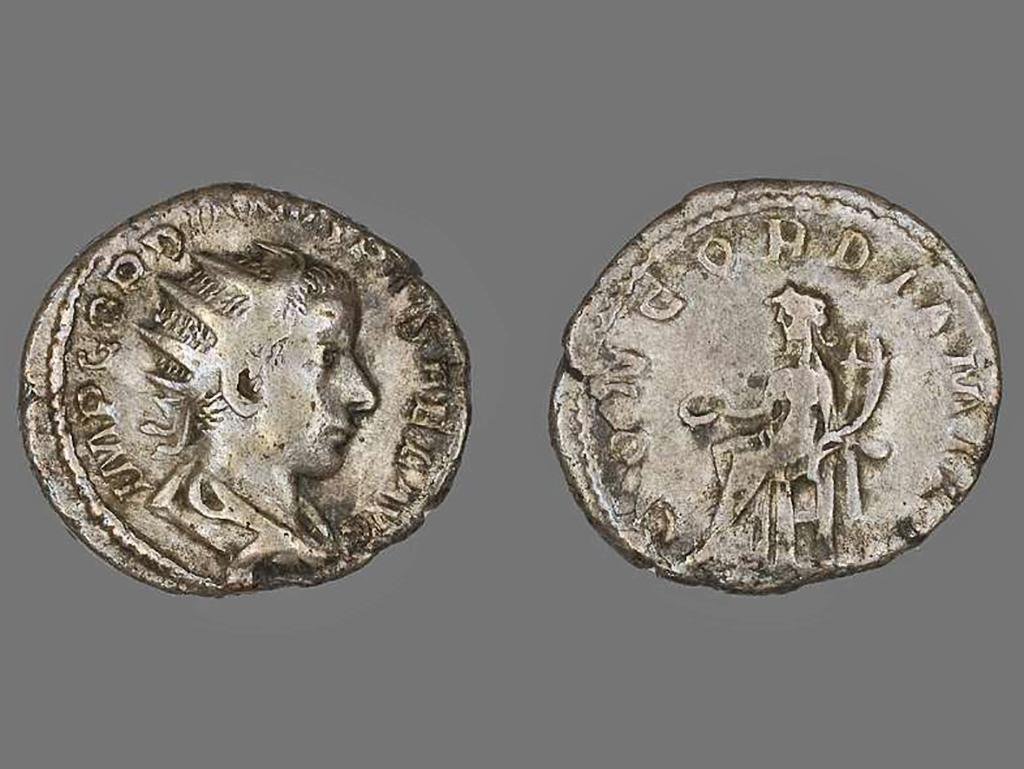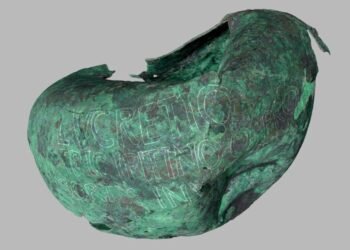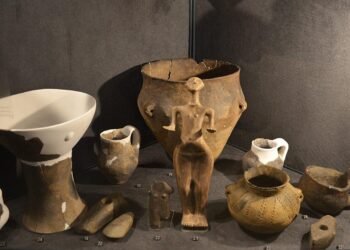A significant discovery of nearly 3,000 Roman-era coins has been made near Herschbach in the Westerwald Mountains, Germany, located far beyond the Roman Empire’s ancient borders. The rare hoard, found in what was essentially “no man’s land” during the third century CE, has puzzled archaeologists, raising intriguing questions about how such a large treasure ended up in a region with no known Roman or Germanic settlements.

The hoard was unearthed by a licensed metal detectorist, who immediately reported the find to state archaeologists in Koblenz, a city on the Rhine River. Subsequent excavations led by the State Archaeology office of Rhineland-Palatinate uncovered about 2,940 coins, along with more than 200 silver fragments adorned with geometric designs. These items were buried in a now-broken ceramic pot concealed between two rocks. The discovery, which took place in February, remained under wraps while experts meticulously studied the coins before making the information public.
According to Timo Lang, the head of the Koblenz branch of the State Archaeology office, the coins are primarily Antoniniani—official Roman silver coins that were mainly made of bronze with a thin silver coating. Due to the poor condition of the hoard, only 100 coins have been fully identified so far. Most of the identified coins depict the portraits of Roman or Gallic emperors, including Roman Emperor Gordian III, who ruled from CE 238 to 244, and Gallic Emperor Victorinus, who reigned from around CE 269 to 271.
The coins, dating between CE 241 and CE 271, are believed to have been buried in the early 270s. The sheer size of this hoard, particularly its location 18 kilometers beyond the Upper Germanic Limes—the frontier that marked the Roman Empire’s border with Germanic tribes—makes it an exceedingly rare find. As Lang explained to Live Science, “Usually coin hoards outside the Roman Empire consist of a few dozen or perhaps a few hundred coins.” Lang noted that only one other known hoard from this period found outside the empire contained more coins, a discovery made in Poland.
Most of the coins were minted in Cologne, which was part of the short-lived Gallic Empire—a breakaway state that existed from CE 260 to CE 274 during a period of political instability. This empire encompassed regions of modern-day France, Belgium, Spain, and parts of Germany and Italy. However, the site where the coins were found was not part of the Gallic Empire, making their presence in the Westerwald Mountains all the more mysterious.
Archaeologists are still investigating how the hoard ended up in such a remote area. One leading theory is that the Gallic Empire may have attempted to bribe Germanic elites to either refrain from attacking or to launch raids against the Roman Empire. Another possibility is that the coins were loot from a raid on Roman territory. The presence of a nearby ancient trade route, as suggested by Lang, adds further intrigue to the find, though the exact reason for the hoard’s burial remains unclear.
In addition to the coins, the silver fragments found at the site are also under study. Although their original use is unknown, Lang’s team plans to use computed tomography (CT) scanning to reconstruct their shape digitally. Eventually, the hoard will be fully analyzed.
The discovery marks the largest find of Roman-era coins north of the Limes, and while the coins themselves may not have substantial material value due to their degraded condition, the hoard is considered of high scientific importance.





















